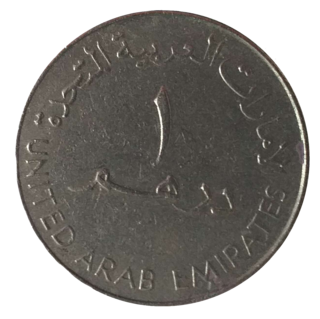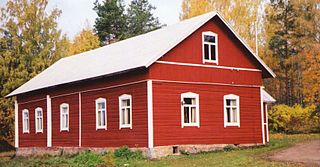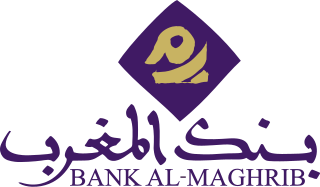

| History of Morocco |
|---|
 |
The falus was a bronze/copper currency of Morocco.
Minted between 1672–1901, denominations of 1⁄4, 1⁄2, 1, 2, 3, 4, 6 and 8 falus are recorded in the Standard Catalogue. [1]


| History of Morocco |
|---|
 |
The falus was a bronze/copper currency of Morocco.
Minted between 1672–1901, denominations of 1⁄4, 1⁄2, 1, 2, 3, 4, 6 and 8 falus are recorded in the Standard Catalogue. [1]
They are typically denominated by size rather than by inscription, and can be difficult to identify precisely.[ original research? ]
From 1862, the falus was allowed to float, while the exchange rate for the silver dirham was fixed: this resulted in currency speculation and depreciation, with effectively two parallel currencies. [2]

ISO 4217 is a standard published by the International Organization for Standardization (ISO) that defines alpha codes and numeric codes for the representation of currencies and provides information about the relationships between individual currencies and their minor units. This data is published in three tables:

Currency substitution is the use of a foreign currency in parallel to or instead of a domestic currency.

The Cooperation Council for the Arab States of the Gulf, also known as the Gulf Cooperation Council, is a regional, intergovernmental, political, and economic union comprising Bahrain, Kuwait, Oman, Qatar, Saudi Arabia, and the United Arab Emirates. The council's main headquarters is located in Riyadh, the capital of Saudi Arabia. The Charter of the GCC was signed on 25 May 1981, formally establishing the institution.

The dirham, dirhem or drahm is a unit of currency and of mass. It is the name of the currencies of Morocco and the United Arab Emirates, and is the name of a currency subdivision in Jordan, Qatar and Tajikistan. It was historically a silver coin.

The Arab Emirates Dirham (; Arabic: درهم إماراتي, abbreviation: د.إ in Arabic, Dh and Dhs or DH in Latin; ISO code: AED is the official currency of the United Arab Emirates. The dirham is subdivided into 100 fils . It is pegged to the United States Dollar at a constant exchange rate of approximately 3.67 AED to 1 USD.

The follis was a type of coin in the Roman and Byzantine traditions.

The fals was a medieval copper coin first produced by the Umayyad caliphate (661–750) beginning in the late 7th century. The name of the coin is derived from the follis, a Roman and later Byzantine copper coin. The fals usually featured ornate Arabic script on both sides. Various copper fals were produced until the 19th century. Their weight varied, from one gram to ten grams or more.

The French protectorate in Morocco, also known as French Morocco, was the period of French colonial rule in Morocco that lasted from 1912 to 1956. The protectorate was officially established 30 March 1912, when Sultan Abd al-Hafid signed the Treaty of Fez, though the French military occupation of Morocco had begun with the invasion of Oujda and the bombardment of Casablanca in 1907.

Falu red or falun red is a permeable red paint commonly used on wooden cottages and barns in Sweden, Finland, and Norway.

Foreign exchange controls are various forms of controls imposed by a government on the purchase/sale of foreign currencies by residents, on the purchase/sale of local currency by nonresidents, or the transfers of any currency across national borders. These controls allow countries to better manage their economies by controlling the inflow and outflow of currency, which may otherwise create exchange rate volatility. Countries with weak and/or developing economies generally use foreign exchange controls to limit speculation against their currencies. They may also introduce capital controls, which limit foreign investment in the country.

The fils is a subdivision of currency used in some Arab countries, such as Iraq and Bahrain. The term is a modern retranscription of fals, an early medieval Arab coin.

The Bank Al-Maghrib is the central bank of the Kingdom of Morocco. It was founded in 1959 as the successor to the State Bank of Morocco. In 2008 Bank Al-Maghrib held reserves of foreign currency with an estimated worth of US$36 billion. In addition to currency management, the Bank Al-Maghrib also supervises a number of private banks supplying commercial banking services. The bank is headquartered on Avenue Mohammed V in Rabat; it has a branch in Casablanca and agencies in 18 other cities in Morocco.

The Moroccan dirham is the official monetary currency of Morocco. It is issued by the Bank Al-Maghrib, the central bank of Morocco. One Moroccan dirham is subdivided into 100 santimat.

The British post offices in Morocco, also known as the "Morocco Agencies", were a system of post offices operated by Gibraltar and later the United Kingdom in Morocco.
The rial was the currency of Morocco between 1880 and 1921. It was subdivided into 10 dirham, each of 50 mazunas.

Falu Bandysällskap, Falu BS, is a bandy club from Falun in Sweden.
Falu is an American singer whose music blends ancient classical Indian melodies with contemporary western sounds. She has worked and collaborated with a wide array of artists including A.R. Rahman, Yo-Yo Ma, Philip Glass, Wyclef Jean, her teacher Ustad Sultan Khan, Blues Traveler, Ricky Martin and Bernie Worrell. In 2022, she won the Grammy Award for Best Children's Album for her album A Colorful World. She was also nominated for Best Children's Album for her 2019 release of Falu's Bazaar, and for Best Global Music Performance for her 2023 release of Abundance in Millets.

Irving Falú is a Puerto Rican former professional baseball infielder. He played in Major League Baseball (MLB) for the Kansas City Royals, Milwaukee Brewers, and San Diego Padres from 2012 to 2014.
Arab Argentine refers to Argentine citizens or residents whose ancestry traces back to various waves of immigrants, largely of Arab ethnic, cultural and linguistic heritage and/or identity originating mainly from what is now Lebanon and Syria, but also some individuals from the twenty-two countries which comprise the Arab world such as Palestine, Egypt and Morocco. Arab Argentines are one of the largest Arab diaspora groups in the world.